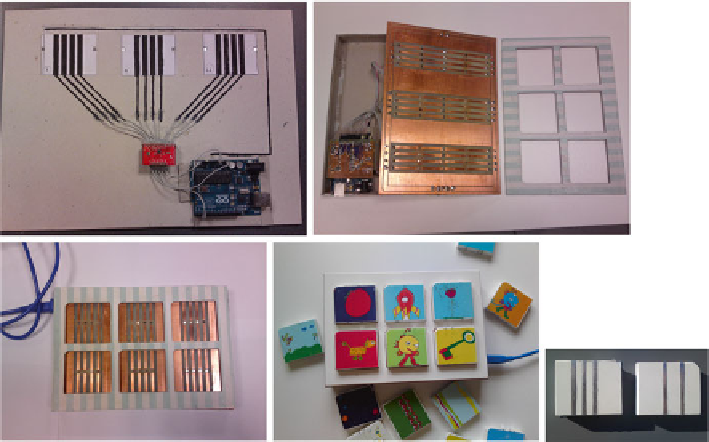Information Technology Reference
In-Depth Information
child, and easy to handle, manipulate and store and represent a very natural means
to support complementary strategies (Antle et al.
2011
; Kirsh
1996
). A complemen-
tary strategy can be defi ned as “any organizing activity, which recruits external
elements to reduce cognitive loads” (Kirsh
1995
: 212).
Additionally, blocks allow multiple users to simultaneously manipulate the
content, supporting peer collaboration and “facilitating communication and “trans-
parency” of interaction between multiple collocated users” (Ullmer and Ishii
2001
:
12), providing “multiple access points” (Hornecker
2005
).
The design of the interaction followed three development principles: visibility,
rapidity and reversibility of actions (Shneiderman and Plaisant
2004
). Following
these principles, the tangible blocks make the interaction explicit and open
(Hornecker
2005
; Ullmer and Ishii
2001
) and give rapid feedback of the performed
actions (placing a block on the platform immediately displays its digital content),
and every performed action is reversible by simply removing the block from the
platform, a feature particularly relevant for content exploration (Hourcade
2008
).
12.3.4.2
Detection of the Physical Content
Having defi ned the physical manipulation, the researchers considered several
methods for the detection of the blocks, ranging from optical recognition, radio
identifi cation, physical properties to embedded circuitry (Fig.
12.3
). The fi rst elec-
tronic prototype consisted of a platform and a small number of blocks with printed
Fig. 12.3
Proof of concept (
top left
); fi rst functional electronic prototype (
bottom left
); prototype
with blocks (
bottom centre
) and backside of two blocks (
bottom right
)

